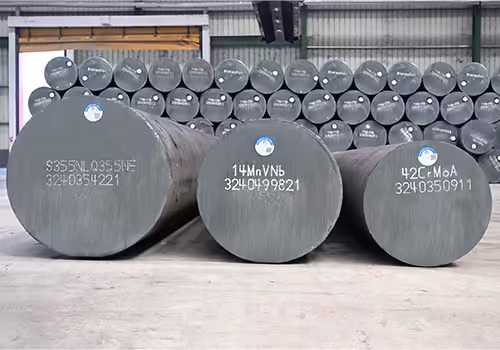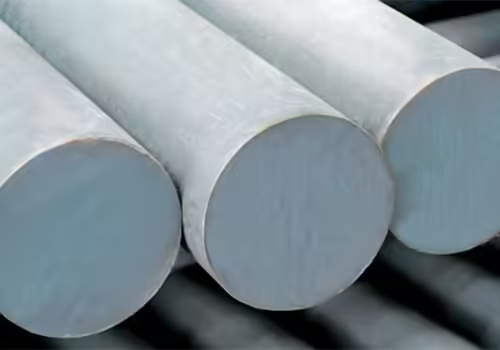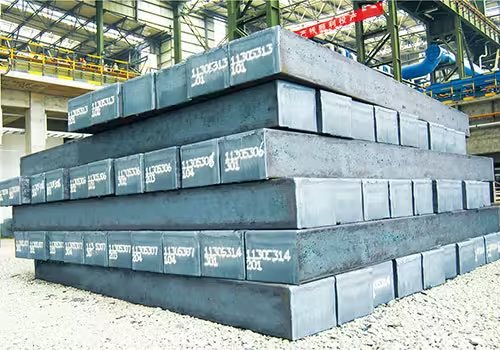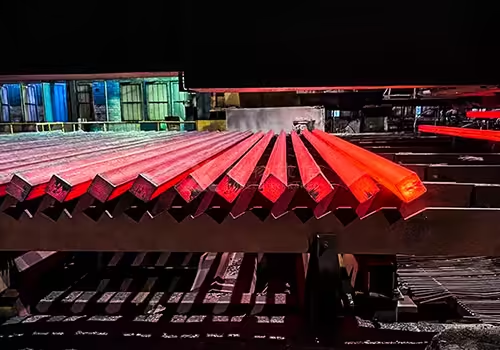
Is the Steel Billet Price Rising? What You Need to Know
Table of Contents
Introduction

The steel billet price serves as a crucial indicator of the global steel industry’s health, influencing sectors from construction to automotive manufacturing. In 2025, the market faces a complex interplay of factors, including supply-demand imbalances, geopolitical tensions, and evolving environmental policies. This comprehensive analysis delves into current trends, regional dynamics, and future projections to provide stakeholders with a nuanced understanding of the steel billet market.
Current Trends in Steel Billet Prices
As of mid-2025, the steel billet market is experiencing significant volatility. Global steel consumption is projected to grow modestly by 1.2% over 2024 levels, reaching approximately 1,772 million tonnes. However, this modest demand growth is overshadowed by an anticipated addition of 50 million metric tonnes of new production capacity, exacerbating concerns about oversupply.
In the United States, recent tariffs on steel imports have led to increased domestic prices, with companies like Nucor Corp. and United States Steel Corp. adjusting their pricing strategies accordingly. Conversely, China’s steel production is expected to decline by low single digits in 2025, with demand remaining almost flat, influencing global price dynamics.
Factors Influencing Steel Billet Prices
Supply and Demand Dynamics
The global steel market is currently grappling with an oversupply situation. Between 2024 and 2026, the industry is set to add around 68.3 million metric tonnes of new capacity, with an additional 88.7 million tonnes in the planning stages. This expansion could lead to an oversupply of 157 million tonnes, significantly outpacing current demand.
Economic Indicators
Economic performance in major steel-consuming countries significantly affects steel billet prices. In the United States, a slowdown in the manufacturing sector, particularly in the automotive industry, has led to reduced steel demand and falling prices. Conversely, India’s steel production and consumption are expected to increase, driven by structural growth in end-user demand and aggressive expansion of domestic capacity.
Geopolitical Factors
Trade policies and geopolitical tensions also play a crucial role. For instance, President Trump’s recent increases in steel and aluminum tariffs by 25%, alongside a new baseline 10% global import tariff, are expected to significantly impact various sectors by raising material costs and extending supply chain lead times. Additionally, President Biden’s proposal to increase tariffs on Chinese steel and aluminum from 7.5% to 25% aims to confront China’s dominance in the global steel market.
Raw Material Costs
The cost of raw materials, such as iron ore and coking coal, directly influences steel billet prices. In 2024, the average price of Fe62% iron ore in China dropped by 10% to $110 per tonne. By 2025, analysts forecast another 13-14% decline, bringing prices down to $95 per tonne. Falling raw material costs reduce overall steel production expenses, potentially leading to lower billet prices.
Regional Analysis of Steel Billet Prices

Asia
Asia plays a leading role in shaping the steel billet price globally. In China, prices have declined due to a slowdown in the construction sector and limited government stimulus. As demand stagnates and production remains high, oversupply continues to pressure prices downward. Meanwhile, India presents a more optimistic picture. Steady infrastructure growth and rising steel consumption are helping to stabilize billet prices despite raw material cost volatility. Southeast Asian countries, such as Vietnam and Indonesia, face weak domestic demand and pricing competition from low-cost imports.
Europe
European billet markets are mixed. Western Europe is dealing with sluggish demand, particularly in construction and automotive, while energy costs and carbon regulations add to production expenses. As a result, billet prices in countries like Germany and Italy have declined. However, Eastern Europe shows signs of recovery, supported by EU-backed infrastructure spending, which has offered some localized price support.
North America
In the U.S., new steel import tariffs have pushed domestic steel billet prices higher, benefiting local producers. However, downstream buyers face higher costs, especially in construction and manufacturing. Mexico and Canada remain more stable, aided by consistent demand and regional trade agreements. Still, North America’s overall billet market is closely tied to infrastructure activity and broader economic growth.
Middle East and Africa
In the Middle East, countries like Saudi Arabia and the UAE continue to invest heavily in large-scale infrastructure, supporting steady demand and firm billet pricing. In contrast, North African nations like Egypt face inflation and currency pressures that make steel imports costlier and demand less predictable. Sub-Saharan markets remain small but are slowly expanding through localized development and industrial investment.
Steel Billet Price Forecast for 2025

Analysts provide varying projections for steel billet prices in 2025. Fitch Solutions maintains an average global steel price forecast of $730 per metric ton, anticipating that protectionist measures in the U.S. will support prices despite lower demand in China. Conversely, other forecasts suggest a potential decline in prices due to oversupply and weakening demand.
Comparative Table: Steel Billet Price Forecasts for 2025
| Source | Forecasted Price (USD/mt) | Key Assumptions |
|---|---|---|
| Fitch Solutions | $730 | U.S. protectionist measures offsetting China’s demand decline |
| Trading Economics (Shanghai) | $458.30 | Weak Chinese demand impacting rebar futures |
| Trading Economics (U.S. Midwest) | $713.26 | Domestic HRC steel prices influenced by local market dynamics |
| BMI by Fitch Solutions | $730 | Anticipated improvement in China’s property sector |
Strategies for Stakeholders

For Manufacturers
Steel manufacturers are directly impacted by the volatility in steel billet prices, and proactive strategies are essential to maintain competitiveness. One key approach is diversification of supply chains—sourcing raw materials from multiple regions helps mitigate disruptions caused by geopolitical tension, trade restrictions, or logistical bottlenecks.
In addition, investment in energy-efficient and automation technologies—such as electric arc furnaces (EAFs) or AI-driven production optimization—can significantly reduce operational costs. This not only lowers the cost per tonne of billet production but also reduces dependence on fluctuating raw material prices like iron ore and coking coal.
Manufacturers should also collaborate with downstream partners—such as construction firms and automotive producers—to forecast demand trends more accurately. This alignment can improve inventory planning and pricing decisions, enabling quicker responses to global market shifts.
Moreover, adopting sustainable practices and meeting global environmental standards (such as carbon neutrality targets) can open access to green financing and ESG-conscious buyers, potentially creating pricing premiums in select markets.
For Investors
For investors, the steel billet price serves as a leading indicator of industrial activity. Monitoring price trends provides insight into the health of sectors like construction, manufacturing, and infrastructure. A diversified investment strategy that includes exposure to steel producers, mining companies, and logistics firms can help mitigate risk from billet-specific volatility.
Investors should pay close attention to macroeconomic signals such as GDP growth, PMI data, and central bank policies, especially in major steel-consuming regions like China, the U.S., and India. For instance, tightening monetary policy in developed markets might reduce construction demand, leading to weaker billet pricing.
Additionally, global geopolitical events—such as trade sanctions, military conflicts, or political transitions—often lead to rapid changes in market sentiment. Staying informed through regular analysis of trade flows, stock levels, and production capacity announcements can improve timing for entry or exit.
The use of commodity futures or hedging instruments is also advisable to manage exposure to short-term price swings, particularly for institutional investors with steel-heavy portfolios.
For Policymakers
Government agencies and regulatory bodies play a vital role in shaping the supply-demand balance of steel billets. Strategic tariffs and trade policies, when well-calibrated, can protect domestic industries from unfair dumping practices. However, excessive or poorly timed tariffs—such as the 25% increases seen in the U.S. in 2025—may backfire by raising input costs for domestic manufacturers and reducing global competitiveness.
Policymakers should also focus on long-term industrial strategy, which includes incentivizing the use of eco-friendly technologies and ensuring the security of raw material supplies. Support for infrastructure development—including transportation networks, power grids, and housing—can drive sustained demand for steel products, offering a stabilizing effect on billet prices.
Additionally, international cooperation and data sharing among steel-producing nations can help anticipate capacity expansions or contractions, reducing the risk of sudden market imbalances.
In emerging markets, facilitating access to industrial financing and creating predictable regulatory environments can encourage private investment in steel manufacturing and processing, ultimately supporting local job creation and economic development.
Conclusion
The steel billet price in 2025 is influenced by a complex interplay of supply and demand dynamics, economic indicators, geopolitical factors, and raw material costs. While certain regions may experience price stabilization due to protective measures and infrastructure investments, others may continue to face challenges stemming from oversupply and weakened demand. Stakeholders must remain vigilant, adapting strategies to navigate the evolving market landscape effectively.
FAQ
Q1: What is the current trend in steel billet prices?
A1: Steel billet prices are experiencing volatility in 2025, with some regions seeing stabilization due to protective measures, while others face declining prices due to oversupply and reduced demand.
Q2: How does China’s economy affect global steel billet prices?
A2: China’s slowdown in the property sector has led to decreased steel demand, impacting global prices due to China’s significant role in the steel market.
Q3: What impact do tariffs have on steel billet prices?
A3: Tariffs can protect domestic industries by making imported steel more expensive, potentially stabilizing or increasing local prices. However, they can also lead to trade tensions and market distortions.
Q4: Are there any positive indicators for steel billet prices in 2025?
A4: Infrastructure investments and protective trade measures in certain regions may support steel billet prices, offering potential for stabilization or growth in those markets.
Q5: How can stakeholders mitigate risks associated with steel billet price fluctuations?
A5: Diversifying supply chains, investing in production efficiency, staying informed about market trends, and utilizing financial instruments like futures contracts can help manage risks.






